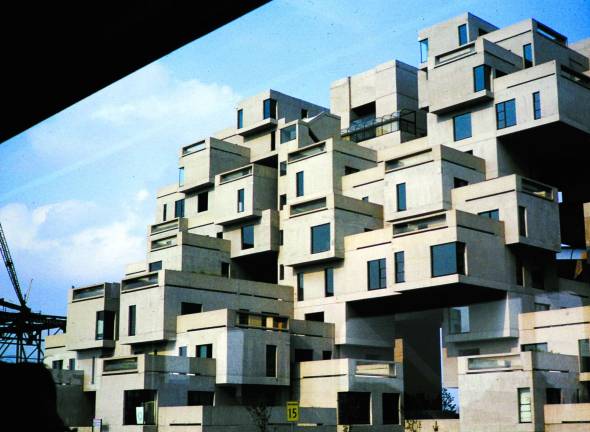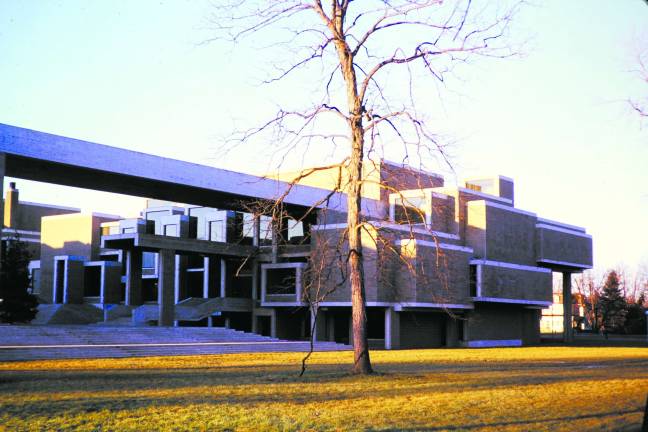FEMA: Storm money may be used for other projects



By Edie Johnson
GOSHEN — There's a light at the end of the poured concrete tunnel that is the Orange County Government Center: a chance to use federal storm money for other projects.
It was a small relief after the state's recent, stunning demand that renovations to the center be done in keeping with historic preservation standards, as befitting a building designed by the eminent architect Paul Rudolph and included on the World Monuments Fund watch list. This setback unraveled years' worth of planning, along with $10 million in study fees, to get the county an efficiently functioning government center after the deluge from Hurricane Irene shut the Rudolph building down in 2011.
The beleaguered legislators on the Physical Services and Rules Committee spent nearly two hours Friday hearing presentations by representatives of the Federal Emergency Management Agency (FEMA) and rehashing the tired litany of options — replace, renovate, demolish, rent. Afterward, they were able to agree on one thing: the center's Brutalist style is an apt description. (The architectural term "Brutalism" actually comes from the French term for rough concrete, beton brut.)
The estimated $3.6 million in federal storm reparation funds will still come to the county, though. And 75 percent of the sum may be applied to "alternative projects," the FEMA represenatives said. The best part is that the alternative projects may be almost anything they "benefit the public good."
Still, the legislators and County Executive Steve Neuhaus all agreed that the ideal use of the money would be to renovate the government center, or one of the ancillary county buildings in Goshen also in need of renovation. But there may not be enough time. The reps from FEMA, which has already given the county several extensions, told legislators Friday that any project getting the money would have to be completed by Sept. 15, 2015.
The complications involved in renovating not only the government center but the 1841 Courthouse or the Board of Elections may also trigger a review from the state department of historic preservation, making completion by the FEMA deadline difficult to guarantee. The simpler the project, the more likely that optimum funding will be forthcoming without a challenge. Some officials suggested buying vehicles for the Department of Public Works.
Expert: No mold in the facade
But talks cycled back to the government center, and especially its facade, which is of particular concern to the historic preservationists that stopped the renovation. Legislators wondered: Should they return to an earlier design that involved less demolition? Was the facade beyond saving because it had too much mold, as had been asserted earlier in the planning process?
A Hazmat expert who had examined the stone said he was "more than 95 percent sure" there was no mold in the walls, and that brand-new building blocks sitting around in a storage yard had much more mold than the center's facade. Mold requires organic material to thrive, he said. So unless organic material had penetrated the walls, mold wouldn't be able to survive, much less spread. But, he said, if the facing stone is left intact, more extensive boring holes would have to be made to search for mold inside the walls.
Some Democrats started to grumble. In that case, they wanted to know, how and when was the decision made that the facing stone would have to be removed?
"How could such a decision have been made without consulting with the legislature?" asked Roseanne Sullivan (D-Wallkill).
Public Works Commissioner Chuck Lee said the building committee made that decision.
Phil Clark of the engineering firm Clark Patterson Lee, which has been contracted to do the center renovation, said his company is made up of professionals who must certify the safety of their projects as a safeguard against lawsuits. At this point, Langdon Chapman, the attorney for the county executive's office, stood up. "I urge you to stop talking," Chapman said.
The offer by prominent New York City architect Gene Kaufman to buy the government center and help build a new one was not up for discussion at this meeting. The executive office has, however, confirmed that they've met with Kaufman and are interested in his offer, along with any others by serious potential buyers.
Options for the shuttered center, and whether to try for funding for the ancillary buildings, will be taken up by the Physical Services Meeting next week.
See related story, "Architects: Save the treasure in your midst": http://bit.ly/1qhB5oe.